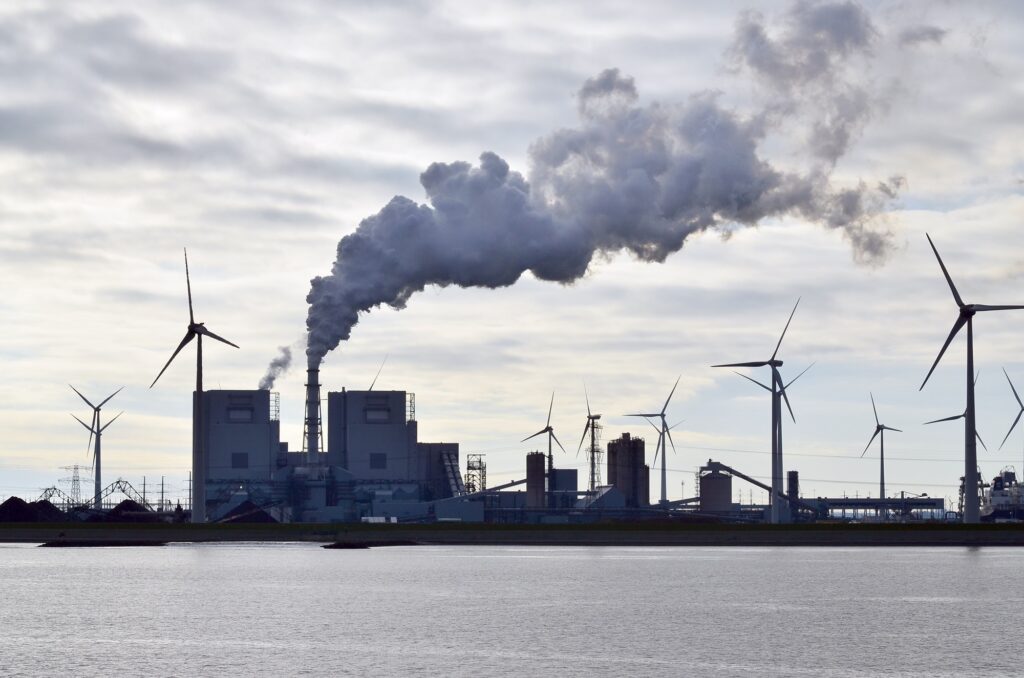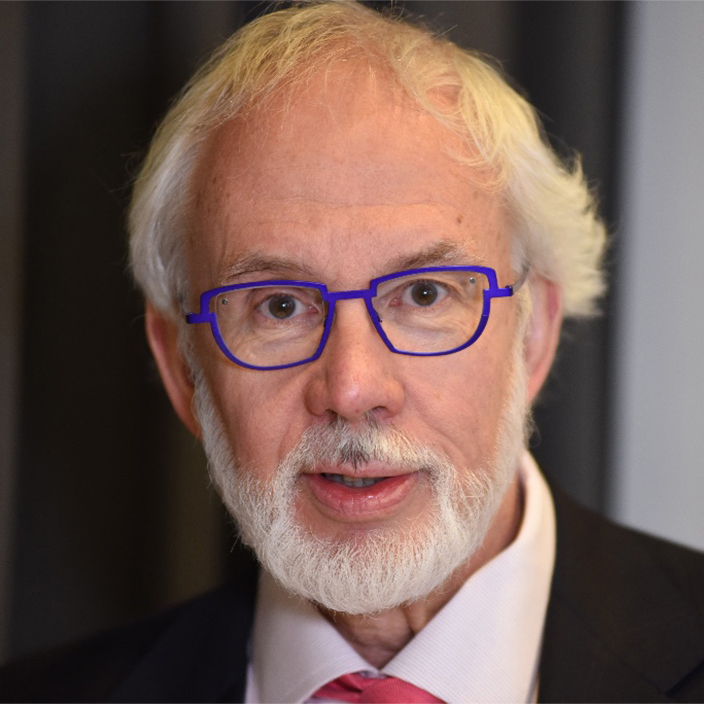I first heard of the Center for Active Stewardship (CAS), a non-profit research organization backed by hedge fund manager Bobby Jain’s Jain Family Institute, in a April 15, 2024 Financial Times article by Lee Harris. That day the CAS launched “a tool called Splice which breaks out the causes of changing emission levels, with sometimes surprising results.” I was intrigued and wrote CAS Executive Director Nolan Lindquist in order to learn more. He informed me about a one of their “ESG State of Play” webinars (slides are available here) on April 17, 2024 being moderated by Ms. Harris. I watched this and learned more. I then approached Nolan to ask him if he’d be willing to do an interview with me and he kindly agreed.

Nolan Lindquist, Executive Directors, Center for Active Stewardship
Eccles: Nolan, thanks for taking the time to talk with me. Just to help set the stage, you know I was interested in the discussion on the webinar about falling shareholder support for ESG proposals. Many people think this is a sign of success by the anti-ESG movement. Is that true?
Lindquist: There’s a narrative out there that the decline in support from big asset managers for shareholder proposals is all because of political backlash around ESG. I guess what I would say to that is, I’m a financial analyst and not a pundit, so I’m not going to sound off on that. What I tend to hear from stewardship teams instead is that the financial materiality of shareholder proposals has gone down over time.
I think if you are an activist, that should actually be really good news. A big part of the problem is coming up with proposals that more investors feel like they can support. That’s something activists can take into their own hands without waiting for some kind of political or regulatory change.
Eccles: We’ll dig into this some more, but first tell me a little bit about your background.
Lindquist: Sure. I grew up in Minnesota, in the suburbs of the Twin Cities. My mom is a retired public school teacher, and my dad sells security systems. I dabbled in debate, edited the school newspaper, and volunteered on a couple of political campaigns. As you can probably imagine, I was a contrarian kid who loved to argue. That probably influenced my later choice of career. In the investing world, you’re always trying to poke holes in the consensus view and figure out how it can be proven wrong.
Eccles: I have a daughter who works in that world, so I know what you mean! I know started your career as an analyst. How did that happen?

Amherst College, Amherst, Massachusetts, USA (Photo: Alamy)
Lindquist: After high school, I went to Amherst College in Massachusetts. I stumbled into investing kind of by accident. A friend from Minnesota who was in the year above me at Amherst interned doing equity research at an asset manager in Boston and the job sounded fascinating. I was lucky enough to land an internship at T. Rowe Price after my sophomore year of college, and then at a boutique asset manager the following summer. I got to work on a bunch of interesting projects and learn about a bunch of quite different businesses.
After college I ended up joining Fidelity as an equity research associate. Fidelity’s associate program is pretty unique and gives you the opportunity to be the lead analyst on the stocks you cover right out of undergrad. I covered “TMT”—or tech, media, and telecom—mostly focusing on media and internet stocks like ad agencies, TV stations, record labels, dating apps, and stuff like that. Not exactly mission-critical industries for the energy transition.
Eccles: Given these sectors, did you pay much attention to ESG at that time?
Lindquist: I hit the desk in 2018. The famous Business Roundtable statement on the purpose of a corporation, which endorsed this idea that boards and management teams should act in the interests of a broader array of stakeholders, and not just shareholders, came out in 2019. This was also the period when flows into any kind of sustainable or ESG-branded fund were on an “up and to the right” trajectory. So these themes were definitely playing out in the background when I was starting out as a junior analyst.
At the same time, I was never an ESG analyst, or a corporate governance analyst. My focus was on figuring out the right fundamental call on my stocks. The companies I covered were mostly asset-light businesses, not companies with a lot of factories churning out widgets. It was especially hard to see how the “E” in “ESG” was relevant to the day-to-day of their businesses. I have a distinct memory of one of my TV station companies telling me proudly that they had replaced the lighting in all their studios with fluorescents, for example.
Eccles: So far, this doesn’t exactly sound like the background of a climate activist!
Lindquist: My professional upbringing was really on the investing side, rather than deep subject matter expertise in sustainability reporting, or the operational side of the energy industry, or the policy and activism worlds. That’s really the lens I bring to bear on these issues today, which I hope is a little bit of a fresh perspective.
Eccles: You mentioned ESG was becoming a more prominent theme on Wall Street early in your career. How has that concept changed over time?
Lindquist: The “ESG” concept brings together a lot of things that investors have always thought about. What seems new and different is what’s going on with the “E” in “ESG.” That is really about how climate policy is changing around the world. The old idea was that we would get carbon taxes and prices that would be high enough and hard enough to get around that they would shift energy consumption away from fossil fuels.
Cap-and-trade and carbon border adjustment type mechanisms are slowly gaining steam and cover more of the world’s emissions every year. But climate policy is now less about sticks to punish fossil fuel users, and more about carrots to encourage investment in new energy technologies.
Eccles: Carrots and sticks—that has a nice ring to it, but can you maybe give me an example?

Powerplant at river Ems (Photo: iStock)
Lindquist: I’m thinking here of policies like the Inflation Reduction Act (IRA) in the U.S., the RePowerEU plan in Europe, and the Green Growth Strategy in Japan. The energy transition is now at the top of the agenda, but its scope has expanded way beyond the traditional remit of environmental policy. Now it’s caught up in this broader push by governments around the world to use policy levers (e.g., tariffs, tax credits, regulatory requirements, and direct public investment) to compete in the 21st century economy
Eccles: Sounds like a lot of change but what’s the connection to ESG?
Lindquist: I think if you really take this idea of ESG as legal or policy risk seriously, then you should focus on the mechanism through which these risks are going to play out. The fact that countries around the world are spending hundreds of billions of dollars to build out domestic, low-carbon industries is enormously important. What it really boils down to is a ton of incentives for capital expenditures that meet certain criteria.
I think the way to conceptualize what transition risk means in the era of green industrial policy is how does this laundry list of incentives affect my decision-making on which business lines I should invest more in, which I should harvest for cash, and which I should try to exit? I think there are tons of opportunities here for thoughtful investors to engage with their portfolio companies on how they’re approaching these questions.
Eccles: We’ve talked about your early career, and about the big picture story on sustainable investing. But how did you end up running a nonprofit?
Lindquist: Good question? The project I run, which we call the Center for Active Stewardship, sits under the Jain Family Institute (JFI) umbrella. JFI is a research institute founded by Bobby Jain back in 2014, focused on developing high-impact interventions for important social issues. JFI is in the midst of building out a number of different climate and energy projects at the moment, which I’ve been pretty involved with, but my biggest area of focus is running CAS.
I thought the team at JFI had a super sharp thesis on how to shift the conversation on impact in public markets from a focus on divestment, which I think can be appropriate for some folks, but ultimately doesn’t offer much leverage in shifting the real economy away from fossil fuels.
Eccles: Let’s talk more about that thesis. What does CAS actually do?
Lindquist: CAS is focused on what investors in public markets can do to bring the world a little closer to a net zero pathway and, especially, on what we call “active stewardship,” which basically means thoughtfully voting proxies and engaging with companies on sustainability issues.
Like I said earlier, I didn’t really come into this role as a sustainability person, or a climate scientist, or an energy guy. Instead, what I bring to the table is my background as an investor. What we try to do is translate between activists, who tend to frame things in terms of “values,” and investors, who mostly think in terms of “value.”
Eccles: Value, values—what’s the distinction you’re trying to make?
Lindquist: The vast majority of U.S. mutual fund and ETF capital has not taken onboard ideas like double bottom line materiality, systems stewardship, universal owner theory, and the like. Instead, investors are typically looking at shareholder proposals from the lens of financial materiality for the target company.
So part of our mission is to bridge this gap: helping investors better understand how some issues that activists care about might translate to the key value drivers for a stock and, in the other direction, helping activists understand why their proposals might be missing the mark with investors.

The proxy vote business letter with a pen resting on the document ready to authorize the governing members. Proxy vote by mail, a common business document sent to all participating business interested party and stakeholders. Photographed in horizontal format in dramatic lighting spotlighting the checkboxes. (Photo: iStock)
Eccles: Why focus so much on shareholder proposals?
Lindquist: The core idea behind CAS is that the proxy voting ecosystem is a really key point of leverage. The way to think about that ecosystem—and this is really a stylized picture of how these things work in the U.S.—is that activists who own a little bit of stock in a company can put forward shareholder proposals, which asset managers have to vote on at a company’s annual meeting. The asset managers are voting on behalf of thousands or even millions of underlying clients, who are the actual asset owners. Asset owners can range from individuals with a small retirement account to big pension funds and endowments.
The SEC has decided that asset managers have to actively use their shareholder voting rights in the best interest of asset owners. But most of the time that requires a lot of judgment; there’s rarely an obvious right answer to how to vote on a particular proposal.
This is particularly true on climate and other environmental and social issues, where there’s less consensus on how to link shareholder proposals to more traditional ways of thinking about corporate value creation. The number of proposals that investors have to vote on has also been increasing. From roughly 2015 to 2017 there were around 200 proposals on environmental and social issues reaching a shareholder vote at U.S. companies per year. That declined to roughly 150 per year from 2018 to 2021. Since then, they’ve surged again. There were over 300 “E” and “S” shareholder proposals voted on in the U.S. alone last year.
Eccles: Wow, that’s a lot of proposals! What are they actually about? “Climate” is a pretty broad category.
Lindquist: An issue we talk a lot about at CAS is that the analytical burden for evaluating the environmental proposals has gotten higher. This is because if you look back to a few years ago, most proposals were asking companies to disclose their emissions, and to basically true up their reporting to the SASB or TCFD standard. But now, more than 80% of the S&P 500 by market cap is already in line with these expectations.
What all this means is that climate proposals are no longer just asking for disclosures. They’re asking for companies to issue climate targets. Implicitly, if a company already has emissions targets, that means they’re asking for more ambitious climate targets. So you really need to do a deep, company-by-company gap analysis to understand the critical issues at play in a given proposal.
But just two years later, support for proposals making it to a vote fell by over half, to a little over 20%. In 2021, the average climate proposal in the US won the support of 43% of shareholders. Two years later, that fell to a little over 20%.
At CAS, we’re trying to think through how to get that number back up. We think shareholder proposals can be a really powerful tool to help get us closer to a net zero pathway. On the flip side, we don’t try to tell investors to change their whole framework and adopt a different way of thinking about materiality. Our lane is a little different. We work within the existing construct of shareholder value and fiduciary duty and shift the Overton Window just a little bit toward supporting climate-focused proposals.
Eccles: I completely agree that shareholder proposals need to be rigorously grounded in shareholder value creation and fiduciary duty, but many aren’t. What are you doing to try to change this?
Lindquist: We’re trying to accomplish this in a couple of ways. First, we’re tracking the votes cast by mutual funds and ETFs. There are no publicly available databases detailing mutual fund and ETF votes, so anybody who wants to analyze them has to either gather the data themselves or purchase an expensive license to a paywalled data source. Either option can be pretty daunting for a small team.
We’ve spent the past year scraping SEC filings, and we now have a database covering 80% of the industry’s assets under management which we’ll be releasing to the public later this year. We’re hoping this data will empower individual investors, researchers, and other organizations to do their own research on stewardship. In the meantime, we’re using the data for other projects, like our rating system grading how funds vote.
Second, we’re building frameworks for evaluating how companies are doing on climate, and tools for applying those frameworks, like. A lot of shareholder proposals are premised on the idea that the target company isn’t doing enough on climate. That could mean it’s not disclosing certain data, like indirect emissions, that activists want to be made public. But increasingly, companies are already sharing lots of climate data, and many have set a net zero target already.
This means that the argument these shareholder proposals are making is that a company’s existing targets aren’t ambitious enough—they don’t call for fast enough emissions reduction, they don’t cover enough of the company’s emissions, they depend on low-quality offsets, you name it. Basically, when a company already has a public climate strategy, calling for the company to disclose a certain kind of climate strategy, whether it’s “science-based” or “Paris-aligned,” is functionally calling for a referendum on the company’s approach to climate.
Eccles: Makes sense and is this where your Splice tool, which I first heard about at the webinar, comes in?
Lindquist: Exactly! With Splice, the idea is to use public data and bring a fresh approach to how companies have managed to reduce their emissions over time. There’s a framework for thinking about the world’s emissions called the Kaya Identity. The Kaya Identity is just an accounting identity that states, emissions is the product of how many people there are, how much economic activity each person generates, how energy intensive that activity is, and how emissions intensive that energy is.

Splice helps users visualize what’s behind trends in corporate emissions. Here, we can see how it breaks down the year over year trend in FedEx’s emissions from 2020 to 2021, with an increase in sales driving higher emissions, only partly offset by improving energy efficiency.
The Splice concept is to basically adapt the Kaya identity to analyze businesses, and to create a tool for visualizing it. It helps break out whether sales grew, how the energy intensity of sales changed, and how the emissions from that energy changed. The idea is to look a little deeper than headline emissions and really see where the change in emissions is coming from.
My view is that emissions is an output, not an input. There’s no magic emissions dial in the CEO’s office. It’s downstream of how much energy you use, and the kind of energy you’re using. Our hunch is that a lot of investors might be more receptive to talking about these drivers of emissions, because they clearly tie with financial drivers, like energy costs, and they haven’t been politicized like climate issues. In theory, this framework should also appeal to activists, since it’s about what will drive emissions over the long term, not just what’s happened year over year.
Eccles: Very intriguing and I’ll be interested in seeing how use of your Splice tool develops. In the meantime, thanks again for your time and good luck with the important work you’re doing!
SUBSCRIBE TO OUR NEWSLETTER
Subscribe our newsletter to receive the latest news, articles and exclusive podcasts every week


